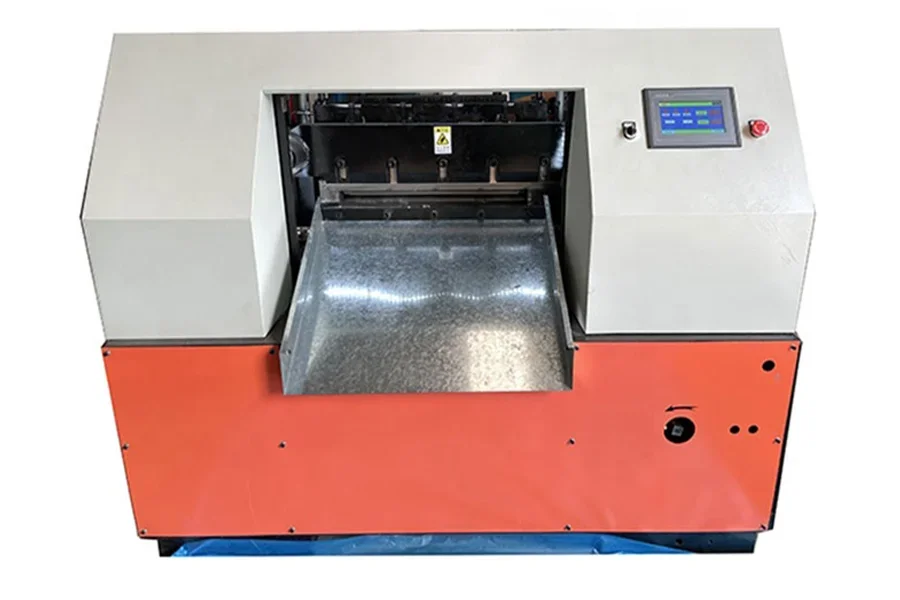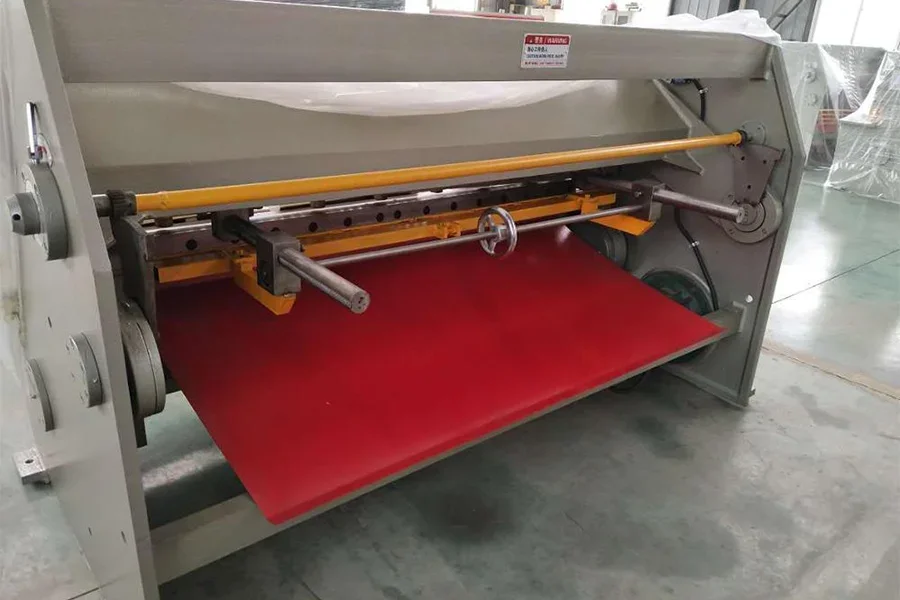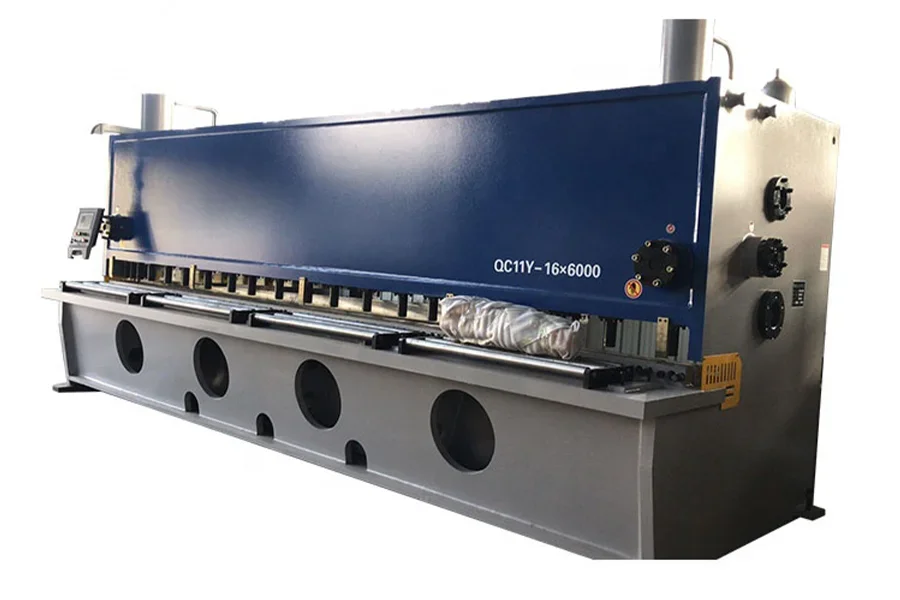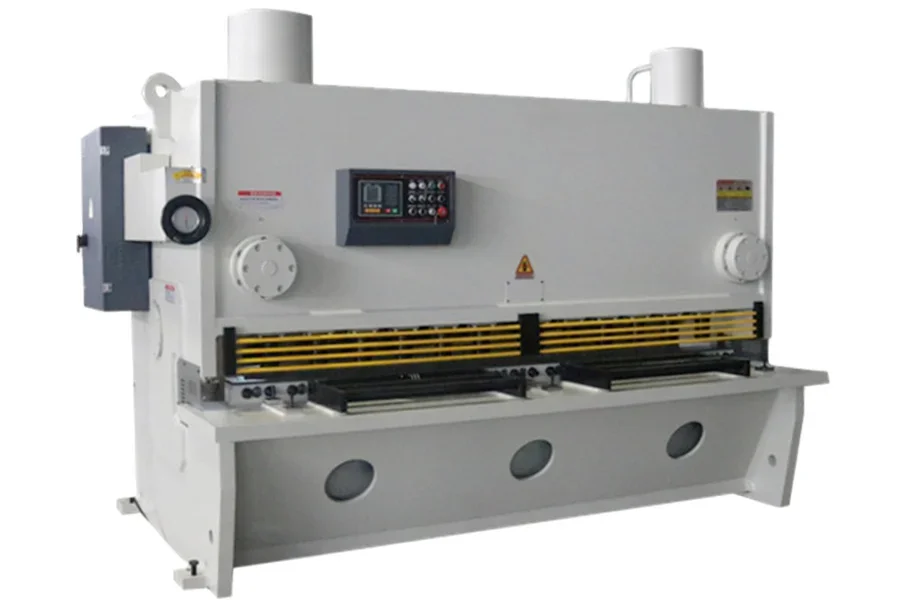Shearing machines are primarily used to trim metals into various sizes and shapes. With different cutting mechanisms, shearing machines are essential in industries that work with metals and sheets. Some of the operations performed on sheets include blanking, trimming, roll-sliting and piercing. The role of this guide is to highlight important aspects of shearing machines.
Table of Contents
Shearing machines: market share and demand
Essential tips to consider before buying a shearing machine
Types of shearing machines
Target market for shearing machines
Shearing machines: market share and demand
The global metal cutting tools market size was $77.24 billion in 2019. Emerging trends include a greater surge in some hydraulic shearing machines than in others. The major reasons for this surge are the precision they offer, efficiency in operation, and low operation cost. Major manufacturers are also interested in incorporating technological advances in the industry, such as incorporating 3D printers in shearing machines.
Essential tips to consider before buying a shearing machine
Businesses should consider several essential factors before purchasing a shearing machine as listed below.
Type of metal being sheared
The sheared material’s thickness, type, and consistency will determine the shear machine used. A pneumatic shearing machine will suffice if the materials are thin gauge metals or light aluminum. However, a ¾” metal plate will require a mechanical shearing machine due to its ability to absorb the shock and strength.
Sheared metal output
When the volume of sheared material required is high, specific improvements should be made. For example, businesses should consider whether the shearing machine can be attached to a conveyor belt to deliver the material and remove workpieces quickly. Shearing machines for industrial use should be adaptable.
Shearing system
Shearing systems can be pneumatic, electric, hydraulic, or mechanical. Pneumatic shears are known for their smooth cuts and silence when in operation. They are different from mechanical and hydraulic shears, which are pretty noisy when in use. However, mechanical shears are easy to use, very fast, and have a shock-absorbing design. Electric-powered shears use electricity as their source of power, so they do not have flywheels to increase tonnage. Businesses should pick the shearing machine that better suits their needs.
Design of the shearing machine
There are two basic design types: guillotine and swing beam. In the guillotine design, the upper blade is driven directly downwards, offering a more robust thrust. The swing beam design uses the power of leverage by pivoting the upper blade, so it uses a smaller drive to shear a workpiece.
Fixed or adjustable rake angle
Adjustable rake angles can either be low or high. The rake angle is the angle the upper blade is canted in relation to the workpiece. A lower rake angle results in a quality cut. However, it requires more power to drive the blade through the material. A high rake angle uses less force but makes poor-quality cuts. Zero rake angle would mean that a lot of force would need to be used in shearing, making it costly. A business should know the optimum quality of cuts they want to make as a guideline for buying a shearing machine.
Operation size
The operation size will directly impact the size of the metal sheet that can be sheared. There are machines of different sizes, such as 1170mm x 300mm, 3100mm x 1600mm, 3880 x 2150mm, and many more. Knowing the size of the metal sheets can help a business determine the suitable operation size for them.
Types of shearing machines
Shearing machines are of various types, each with its advantages and disadvantages.
Straight knife shearing machine
The straight knife shearing machine utilizes a movable upper knife and a stationary lower knife. The workpiece is placed between these two knives.

Features:
- Squaring shears can be used for trimming and cutting strips.
- To maintain clearance, one of the knives has to be adjusted.
Pros:
- It is economical for cutting straight-sided blanks from strips.
- It easily cuts sheets of less than 50mm.
Cons:
- The knife has to be constantly replaced due to wear and tear.
Mechanical shearing machine
The mechanical shearing machine uses two sharp edges that are closely adjoined, and the material is placed in between.

Features:
- It is operated manually.
Pros:
- It is simple to operate.
- It is easy to maintain.
- It is shock resistant.
Cons:
- It cannot work at full capacity for a long time.
- It makes a lot of noise when in operation.
- It consumes a lot of time and effort to adjust the blade gap.
Pneumatic shearing machine
The pneumatic shearing machine uses the activation of air cylinders to power the crosshead and upper blade.

Features:
- The cutting tool is placed at the end of the pneumatic cylinder rod.
- It uses compressed air as the source of power to cut metal.
Pros:
- It is very fast and accurate.
- It is overload safe.
- It is easy to maintain.
Cons:
- It is costly to acquire.
- It is noisy when in operation.
- It creates non-uniform thrusts.
Hydraulic shearing machine
The hydraulic shearing machine uses a motor-driven pump to force oil into a cylinder against a piston.

Features:
- It has a digital display that shows the stock position of the back gauge and shearing count.
- It has a hydraulic transmission and accumulator stroke return.
Pros:
- It takes a small space while applying the same pressure as other machines, such as the mechanical shearing machine.
- It is fast and accurate.
- It does not require much maintenance compared to the mechanical shearing machine.
Cons:
- It produces hydraulic waste.
Target market for shearing machines
The global metal cutting tools market size is expected to grow to $101.48 billion by 2027, growing at a CAGR of 4.2%. According to the UN, 54% of the global population lives in urban areas, which leads to the generation of more employment opportunities. The consequence of this is a growing automotive industry which will place a high demand on shearing machines. As a result, the shearing machines market is expected to grow steadily. The exponential industrialization growth in China and India is expected to cause a high growth in the Asia and Pacific region, followed closely by Europe and the North American region.
Conclusion
This article has explained the types of shearing machines and their global target market. Understanding the dynamics of this industry is helpful because it allows businesses to know which shearing machine to acquire and which one not to. This article also guides prospecting businesses on the pitfalls to avoid, providing them with an advantage over their competitors. More information can be obtained from the shearing machines segment on Alibaba.com.




